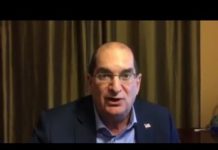Key Highlights
- Mortgage servicers overwhelmed by lack of liquidity due to mammoth demand for mortgage forbearance
- Mortgage servicers asked for liquidity facility similar to Ginnie Mae program that aiding servicers backed by FHA, VA and of Agriculture loans
- Servicers with GSE-backed loans granted no liquidity aid but loans may be transferred to larger servicers
The sudden and awesome financial impact of the COVID-19 pandemic caught all markets off guard. From unemployment spikes to business closures to Wall Street and to real estate and mortgage markets, people are overwhelmed. Though the federal government and the Federal Reserve have quickly kicked in relief programs in efforts to keep workers, businesses and markets afloat, the financial magnitude of this pandemic is and continues to be overwhelming.
Download Your FREE Ultimate Agent Survival Guide Now. This is the exact ‘do this now’ info you need. Learn NOW How to Access All The Bailout Program Cash You Deserve. Including Unemployment and Mortgage Forbearance Plans. To Access the Ultimate Agent Survival Guide Now Text The Word SURVIVAL to 47372. 4 Msgs/Month. Reply STOP to cancel, HELP for help. Msg&data rates may apply. Terms & privacy: slkt.io/JWQt
Mortgage services have been besieged by homeowners applying to place their property mortgages in forbearance. At least half of all mortgages are backed by GSEs, or Fannie Mae and Freddie Mac, and many servicers simply haven’t the liquidity to grant forbearance, or deferral payments on mortgages, and still pay their mortgage bond holders as required by law.
We discussed this state of affairs as well as mortgage servicers ’requests for liquidity in a former post earlier this week.
Mark Calabria, the director of the Federal Housing Finance Agency that oversees Fannie Mae and Freddie Mac, told HousingWire that no liquidity facility was coming. Calabria did say that servicers who were struggling with liquidity can either be turned into “sub-servicers or transfer their servicing to other parties that have portfolios large enough to absorb whatever servicing transfers are necessary.”
“We’ve had regular calls with a number of servicers in talking about the capacity, and there are a number of very large players, both bank and nonbank, who have a capacity to take over what we think is almost the entire range of what’s likely to happen,” said Calabria.
After the financial crisis, many large banks such as Bank of America and JPMorgan Chase reduced the number of loans they were willing to take on under GSE and Ginnie Mae supported programs and nonbanks stepped in to fill that void. In fact, the share of nonbank new mortgages has now risen to 66% of the market from 40% in 2013, according to the Urban Institute.
(Who those large banks and nonbanks to which Calabria has referred is anyone’s guess. Nonbanks such as Freedom Mortgage, Mr. Cooper and Quicken Loans were some of the servicers who signed that letter asking for liquidity aid mentioned above.)
That said, Calabria admitted to “Transferring servicing is…not without disruption.” He, for example, cited his own personal experience when his mortgage servicer was transferred and the new servicer didn’t pay his property taxes. “But…we believe that transferring servicing from smaller players to more reputable larger players…would probably mean that the consumer experience will be better, not worse.”
Thanks to HousingWire and BloombergNews.
Also read: Renters Get No Relief from CARES Relief Act, Freddie Mac and Fannie Mae Relaxing Appraisal and Employment Verification Guidelines, Outlook: Economy, Loans, Unemployment and Housing Market
































